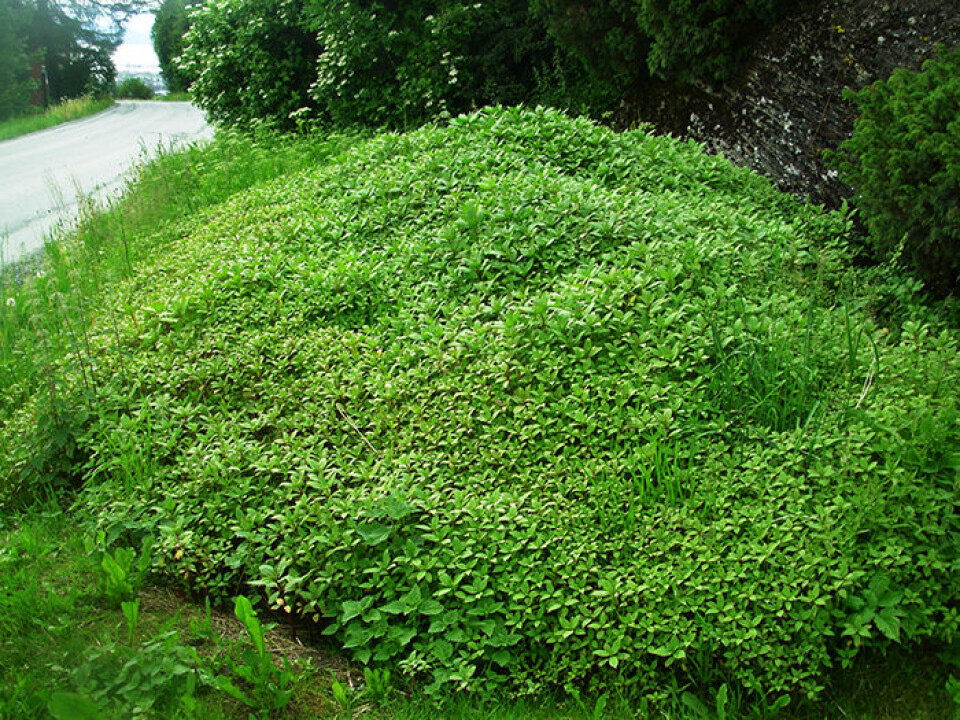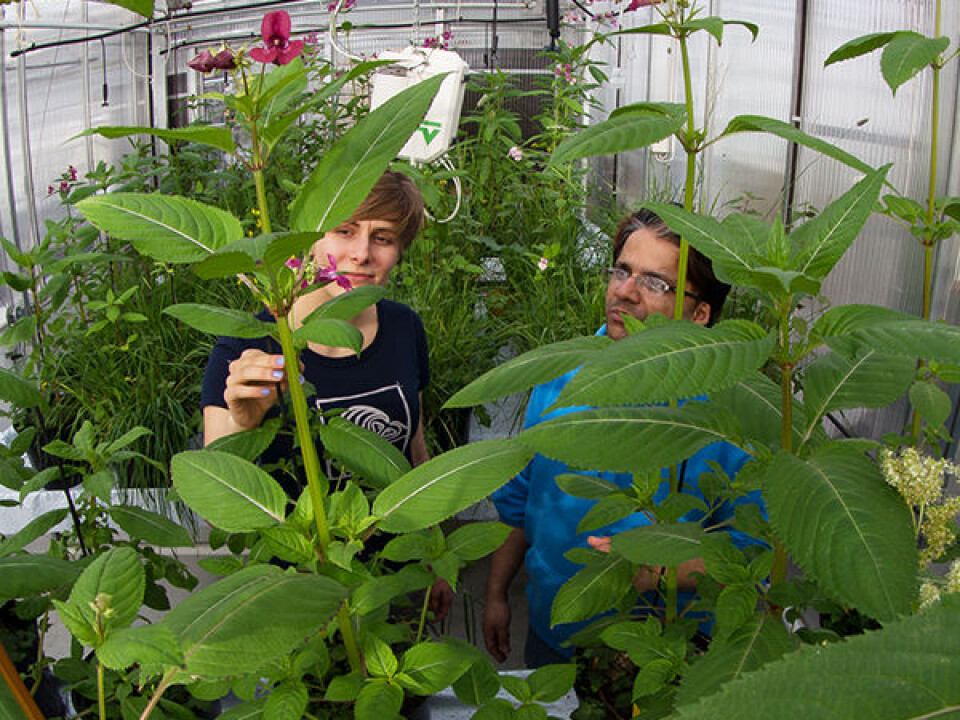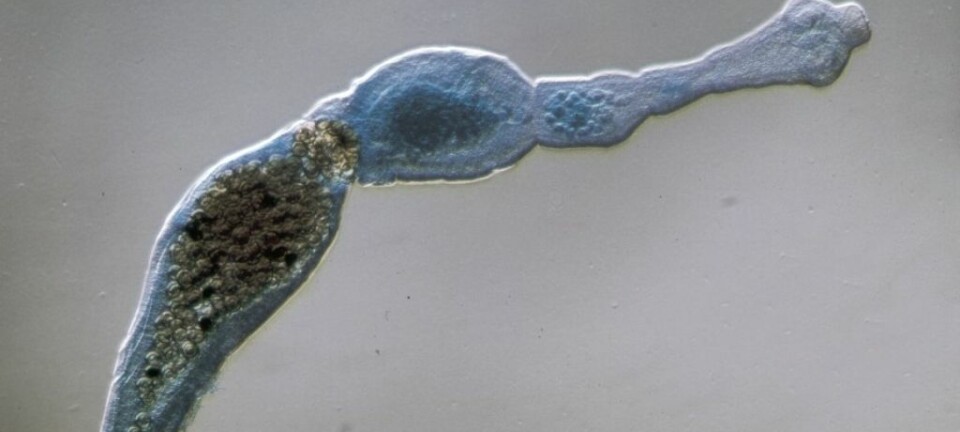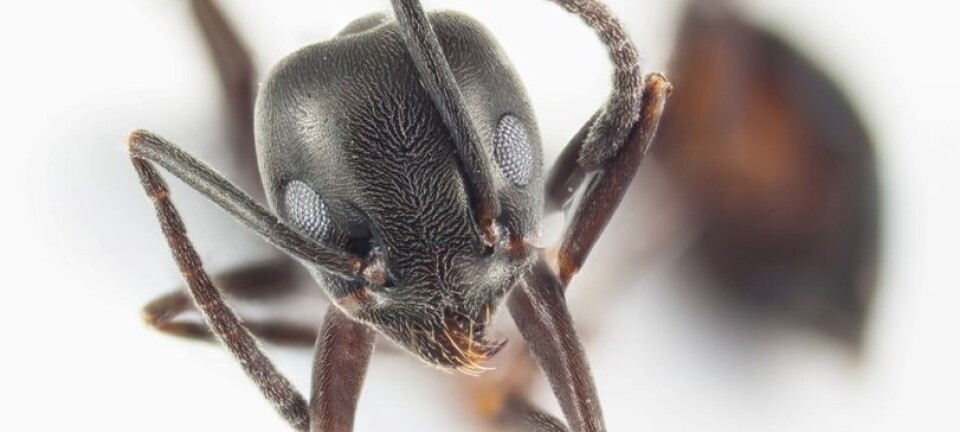An article from Norwegian SciTech News at NTNU

Beautiful, but blacklisted
Policeman’s Helmet is a fast-growing plant that can easily adapt to different conditions.
Denne artikkelen er over ti år gammel og kan inneholde utdatert informasjon.
The plant Impatiens glandulifera, commonly known as Policeman’s Helmet, grows very quickly, as much as 4 centimetres per day. It can grow to a height of 1.5 to 3 meters.
It has attractive purple, pink or white flowers. The flowers mature into seed pods that spontaneously explode, spreading thousands of seeds in a 6-7 meter radius. This creates a colony of rapidly growing plants that often outcompete other species. This ability has given the Policeman’s Helmet a high ranking on Norway’s Black List of invasive plants.
Very adaptable
Policeman’s Helmet is very good at adapting to its surroundings. NTNU biologist Kamal Prasad Acharya is studying how plants like Policeman’s Helmet plants adapt to new environs, and how they propagate. He has collected seeds from six different populations around Europe via a research network of biologists. The seeds come from France, Belgium, Germany, Sweden and Norway.
The populations from the different geographical areas differ in the height they reach and the time between flowering and the maturation of the seed pods. Acharya has cultivated seeds from the different populations so he can study these differences.

“They grow differently, and it turns out that they adapt to their environment very quickly,” he explains.
Fast reproduction in the north
“I have grown two generations of these plants in controlled surroundings in the university’s greenhouse. I have observed clear differences between the different populations, which is usually unexpected if the plants don’t have any genetically adapted differences,” Acharya says.
The further north the populations come from, the faster they grow to begin with and the faster they begin to flower, whereas the populations from further south are in flower for a shorter amount of time.
“The plants from the north have a shorter growth season and have to complete their life cycle more quickly. This indicates that the species has adapted to varying climatic and geographical conditions quickly, since they haven’t grown in the different areas for very long,” he explains.
A long migration

Like many invasive species, such as dandelions and lupines, Policeman’s Helmet was originally imported as a decorative plant. It is originally from the western Himalays, where it grows as high as 4000 metres. It can also be found in the Kashmir area of India, and it was here the Europeans discovered it. The British botanist John F. Royle collected seeds from India that he sent home to Great Britain. This was how Policeman’s Helmet arrived in Europe in 1839.
Policeman’s Helmet arrived in Norway via the biologists Frederik Christian Schübeler in the 1870s. Schübeler was a professor at the university in Kristiania and was in charge of the botanical gardens and museum. He experimented with plants, and sent curious gardeners all over the country to collect plant samples and seeds to cultivate. Among these species was Policeman’s Helmet.
Spreads in many ways
In Norway, most of the plants are found around Oslo fjord and in central Norway, especially near Trondheim fjord. The northernmost population was found in Nordreisa in Troms. But Schübeler and the exploding seed pods can’t take sole credit for spreading Policeman’s Helmet around the country. It spreads itself in several ways.
Many of the early observations were near mills, so it was assumed that the seeds had come to Norway along with imported grains. The seeds can also travel long distances in the water, in streams or roadside ditches. They also spread through the transport of dirt or garden waste. Additionally, ants have been found to transport the seeds and thus propagate the plant.
Proof of the existence of several varieties has been found. These varieties may have been introduced to the same place at several different times. This is even worse than a simple invasive species.
“Several introductions increase the genetic diversity that contribute to creating even more adaptable populations,” Acharya says.



































